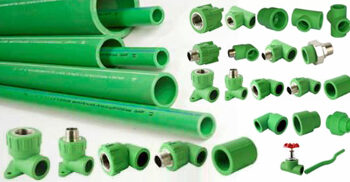Plumbing and water pipe systems is an ancient science that first had its roots in India, China, Greek and Roman cities where pipe systems were laid down to bring in and take out water from public baths. Remains of sophisticated plumbing systems can still be found in the Mohenjo-Daro and Harappa civilizations. The word ‘plumbing’ has its roots in the Latin word for ‘lead,’ as water pipes in ancient Rome were constructed of Lead.
Over the generations, piping and plumbing have gone through several evolutionary stages until it reached modern ages where plumbing pipes are made of synthetic materials like PVC-or Polyvinyl Chloride which is a polymer of vinyl chloride monomer units.
A Brief History of Pipes
Much before the Romans had their lead pipes, ancients civilizations used pipes of clay, and hollowed bamboo. Hollowed logs were used in many places to transport water. After that came lead, followed by copper. Today most pipes are made of steel, copper, iron, and of course, PVC.
The PVC pipe
PVC pipes revolutionized domestic plumbing. PVC pipe manufacturers first took to business when Waldo Simon plasticized PVC in 1926. And by 1940, PVC pipes were in the market completely changing the domestic water and waste-disposal plumbing system. PVC is a light, durable, long-lasting and economical plumbing option. PVC comes both as hard and flexible. The flexible PVC pipes are the kind that is used in watering gardens. The hard pipes are the ones seen under the kitchen sink.
PVC completely revolutionized many areas of the market, not only piping and plumbing. PVC is used in manufacturing bottles, bank cards, food packaging, faux leather, electric wire insulation, etc. It is also used in place of rubber many times. But more than half of the PVC manufactured per annum goes in making pipes. In fact, 66% of water pipes are made of PVC.
